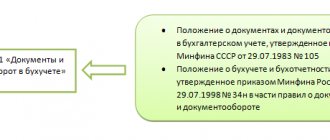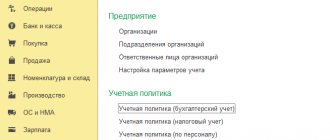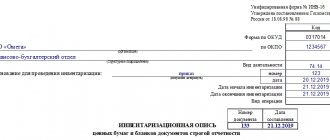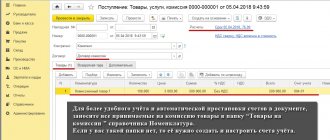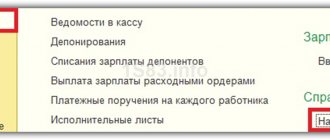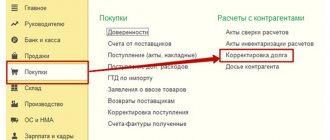When an employer receives a writ of execution against an employee, the document must be accepted and processed by a specially appointed employee, most often a payroll accountant. First, he must register it and then calculate the total indicators according to the writ of execution for deduction from the employee and transfer them according to the specified details. In addition, your employee will have to interact with government agencies on issues related to these documents.
Enforcement documents provide for a variety of penalties - alimony payments, debts on credit obligations, utility bills, compensation for damage caused to third parties, etc. To correctly withhold amounts under the current legislation of the Russian Federation, it is necessary to understand in detail the features and nuances that arise when resolving an issue of this kind.
The 1C:ZUP program has a special document for deductions based on writs of execution.
Legislation on executive documents
According to Art. 137 of the Labor Code, deductions from wages may be made in cases regulated by the Labor Code or specific federal laws. The amount of such withholding should not be more than 20%, and in some situations (according to specific regulations) - no more than 50%.
There are also situations in which the amount of withholding will not exceed 70%, for example, the collection of alimony payments, compensation for harm or damage. With this option, deductions are made regardless of how the employee feels about it. The main thing is that an official document from government agencies must be drawn up.
If the employee himself expresses his will to withhold any amount or percentage from his wages, then in this case the norm of labor legislation does not apply. In other words, there is no restriction on how much an accountant has the right to withhold a specific amount of money from an employee's salary.
Important! An official withholding document received by an organization has more legal force than a statement from an employee. In this regard, deduction should initially be carried out according to an official document from government agencies, and then by decision of the individual himself.
Start of hold
At the initial stage, when processing a writ of execution, a specialist may encounter specific difficulties - at what point should deductions be made and how to determine the amount of debt under the document. The moment the retention begins is the date the company receives this document.
For example, if it was received by the employer in early October before the payment of the September salary, then the deduction must already be made from the salary for September. If the document is received by the company after the payment of the September salary, then the first deduction will be made from the salary for October.
When withholding, you also need to pay attention to whether it indicates a specific start date for the document. In many cases, bailiffs, as a rule, independently indicate the amount of debt. In a situation where an executive document is received by an organization much later than the specified start date of withholding, the accountant does not need to recalculate anything - he uses the figure indicated in the document from the date when the document came into his hands.
If the company is not sent a writ of execution, but, for example, a notarized agreement or a court order, then the accountant must act differently. With this option, he will have to independently determine the amount of debt, since a specific figure is not indicated in the document. For example, it may be formalized that alimony payments in the amount of 25% should be withheld from income. And then the accountant independently determines the amount depending on the employee’s income. In this case, the moment the retention begins will be the date specifically indicated in the document.
Before accounting
As a general rule, registration of a writ of execution can occur the next day after its receipt. Although there is no point in delaying the executive documents so much. It is difficult for the HR department or accountant to competently verify the authenticity of the executive document, as well as documents identifying the identity and authority of the person presenting it. Therefore, in medium and large companies, the function of interaction with external collectors is assigned to the legal department or a specially authorized security officer, which is quite justified. It is these specialists, acting more consciously, who should have the right to certify (sign) the note on receipt of the writ of execution.
The fraudster, as a rule, applies to a regional court of general jurisdiction with a statement of claim under a “fake” agreement, the amount of which does not exceed 500,000 rubles. This is the threshold for disputes for an amount below which decisions by magistrates are made in a simplified manner within the framework of a court order in accordance with Article 121 of the Code of Civil Procedure of the Russian Federation. The simplified procedure allows the magistrate alone, on the basis of an application for the recovery of a sum of money, to issue an order without a trial as such and without summoning the parties to hear their explanations.
To obtain a contract form, details and a sample seal, fraudsters deliberately enter into fictitious contractual relationships and conduct business correspondence in order to obtain the necessary data. Tour operators are especially vulnerable, since they can send their contract by email to any counterparty.
The next stage is the theft itself. The claimant comes to the bank with a writ of execution, or more often sheets (each worth less than 500,000 rubles), which the bank is obliged to execute within one day, if there is no doubt about its authenticity. After which the funds leave the legal entity’s account to the fraudster.
Withholding limits
When calculating the amount of deduction, the accountant must focus on the limits regulated by law:
- up to 50% - in general cases;
- up to 70% - in exceptional cases.
Exceptional cases include alimony payments; compensation for harm caused to the health of another person; compensation for harm to individuals who suffered damage due to the premature death of their breadwinner; compensation for damage caused due to a criminal act.
However, in practice, questions often arise about exactly how much deduction should be made on a document. This is especially true in situations where one employee receives several enforcement documents at once. In this case, the payroll accountant must evaluate which of the documents received is more important, i.e. draws attention to the order of satisfaction of requirements under executive documents.
The first priority includes the exceptional situations listed above, as well as compensation for moral damage. Further, the requirements are distributed according to the degree of importance and, for example, the bank’s demand for collection of loan debt falls into the fourth stage.
As a result, it turns out that first it is necessary to satisfy the requirements related to the first stage. If possible, funds are withheld according to requirements from the following queues - second, third, etc.
Procedure for working with writs of execution
The organization receives a wage foreclosure filed by employees of the bailiff service. The following documents are attached to it:
- copy of the writ of execution;
- resolution on withholding the enforcement fee;
- account details with a credit institution for transferring withheld amounts.
When receiving a deduction from wages, you need to do the following:
- register the document in a special journal, the form of which can be developed by the company independently;
- fill out and send the tear-off spine to the bailiff. This action will prove that the writ of execution was received by the organization and accepted for execution;
- it is obligatory to familiarize the employee for whom the writ of execution has been received with its contents against signature;
- provide the payroll accountant with the recorded withholding order;
- keep the received document until it is returned to the bailiff.
In terms of organizing the document flow of executive documents, the legislation does not clearly indicate how exactly it should be carried out. However, if the document is lost or it is untimely returned to the bailiffs, for example, upon dismissal of an employee, then a fine will be imposed on the company and its officials in accordance with Part 3 of Art. 17.14 of the Code of Administrative Offenses of the Russian Federation, namely for the employer from 50 to 100 thousand rubles. and for responsible persons from 15 to 20 thousand rubles. The same administrative penalty is provided if, according to the executive document, the specified requirements for withholding and transferring funds are not fulfilled.
Control over the processing of writs of execution is assigned to bailiffs. They have the right to conduct inspections in companies to which enforcement documents have been sent to employees.
Important! In order to protect the organization from penalties, it is advisable to properly organize the recording and storage of writs of execution. You should also appoint responsible persons who will register, store and execute documents.
How to issue a writ of execution in 1C: ZUP
You can start working with the writ of execution in any journal. From the menu options you need to select “Create”. A menu will open that must be filled out using information from the writ of execution or the alimony agreement.
The following data must be entered into the log:
- FULL NAME. the employee to whom the writ of execution is directed;
- recipient of funds;
- period (it is not necessary to enter the date for which deductions will be made);
- calculation method.
If the transfer of funds will be carried out by postal order, indicate the full address of the recipient.
The calculation method is a fixed amount or a certain percentage of the salary. Payments automatically stop when they reach a certain amount. This feature is activated by the “Stop Holds When Limit Reached” tab.
Please note that you must enter the type and details of the writ of execution. The field for entering information is located at the bottom of the screen. The entered details will be visible in printed documents.
The program provides the ability to use a paying agent for collection. To do this, you need to activate the checkbox, select the agent’s name from the list and indicate the tariff for its services (for example, a bank commission for transferring money).
Having filled in the data correctly, save the document by clicking the “Post and Close” button. Please note that the retention calculation is based on the database, which was configured in the “Settings-Retentions” menu.
The document contains information about the type of accruals to the employee from which the amount of deductions from the writ of execution will be debited. If the company has additional payments, they must be entered into the database using the “Selection” button for calculation.
After entering the data, the program will carry out deductions according to the writ of execution automatically. Information about deductions made within the writ of execution can be checked in the “Deductions” tab.
We are trying to create a payslip for an employee.
As can be seen from the figure, the card reflects the amount of deduction.
Example of calculation of deductions
Let's consider an example of calculating deductions for two executive documents received by the employer in relation to one employee.
First Spanish sheet - on withholding child support payments in the amount of 25% of wages.
Second Spanish sheet - about withholding debt under a loan agreement in the amount of 50% of the salary, which is equal to 15,000 rubles.
For October 2022, the employee received a salary of 25,000 rubles. He has the right to receive a standard tax deduction - 1,400 rubles. for a minor child.
The accountant must make the following calculations:
- Personal income tax = (25,000 - 1,400) * 13% = 3,068 rubles.
- 1 sp. sheet = (25,000 - 3,068) * 25% = 5,483 rub.
- 2 Spanish sheet = (25,000 - 3,068) * 50% = 10,966 rub.
However, according to the second Spanish According to the document, the amount should be withheld in a smaller amount, since it is necessary to take into account the deduction under the first application. document:
- (25,000 - 3,068) * 50% - 5,483 = 5,483 rubles.
Residual debt under the second application. the document will need to be withheld in the following months in the same way, that is, after alimony is withheld.
Holding Features
When making deductions from wages, you need to pay attention to the following nuances:
- withholding cannot apply to certain types of income, for example, state benefits or financial assistance from the federal budget, certain types of compensation payments, etc.;
- the fee for transferring money may be withheld from the employee in respect of whom this procedure is being carried out. This can be either a commission from a credit institution for processing a payment order or costs for transfer by mail. The percentage limitation established by law does not apply to these amounts;
- when a new requirement is received, the document is taken into account along with previously received ones, i.e., it is not postponed until the previous withholding requirements are fully satisfied;
- bailiffs can check how deductions are calculated, either on their own initiative or on the basis of a complaint from the claimant.
Employee income that cannot be levied
According to Article 101 of Law No. 229-FZ, collection cannot be applied to the following types of income:
- amounts paid in compensation for harm caused to health*;
- amounts paid in compensation for damage in connection with the death of the breadwinner;
- amounts paid to persons who received injuries (wounds, injuries, concussions) in the performance of their official duties, and members of their families in the event of death of these persons;
- compensation payments from the federal budget, budgets of constituent entities of the Russian Federation and local budgets to citizens affected by radiation or man-made disasters*;
- compensation payments from the federal budget, budgets of constituent entities of the Russian Federation and local budgets to citizens in connection with caring for disabled citizens;
- monthly cash payments and (or) annual cash payments accrued in accordance with the legislation of the Russian Federation to certain categories of citizens (compensation for travel, purchase of medicines, etc.);
- amounts of alimony , as well as amounts paid for the maintenance of minor children during the search for their parents;
- compensation payments established by the labor legislation of the Russian Federation:
a) in connection with a business trip, transfer, employment or assignment to work in another location;
b) due to wear and tear of a tool belonging to the employee;
c) amounts paid by the organization in connection with the birth of a child, the death of relatives, and the registration of marriage ;
- insurance coverage for compulsory social insurance, with the exception of old-age pensions, disability pensions and temporary disability benefits** ;
- survivor's pensions (from the federal budget);
- payments to pensions in case of loss of a breadwinner (at the expense of the budgets of the constituent entities of the Russian Federation);
- benefits for citizens with children (at the expense of the federal budget, state extra-budgetary funds, budgets of constituent entities of the Russian Federation and local budgets);
- Maternity (family) capital funds provided for by the Federal Law of December 29, 2006. No. 256-FZ “On additional measures of state support for families with children”;
- amount of one-time financial assistance paid:
a) in connection with a natural disaster or other emergency circumstances;
b) in connection with a terrorist act;
c) in connection with the death of a family member;
d) in the form of humanitarian aid;
e) for providing assistance in identifying, preventing, suppressing and solving terrorist acts and other crimes;
- the amount of compensation for the cost of vouchers, with the exception of tourist ones , paid by employers to their employees and (or) members of their families, disabled people who do not work in this organization, to sanatorium-resort and health-improving institutions located on the territory of the Russian Federation, as well as the amount of compensation for the cost of vouchers for children, those under 16 years of age, to sanatorium-resort and health-improving institutions located on the territory of the Russian Federation;
- the amount of compensation for the cost of travel to the place of treatment and back (including the accompanying person), if such compensation is provided for by federal law;
- social benefit for funeral.
* In accordance with paragraph 2 of Article 101 of Law No. 229-FZ, on alimony for minor children, as well as on obligations for compensation for harm in connection with the death of the breadwinner, the restrictions established by paragraphs 1 and paragraph 4 of paragraph 1 of Art. 101 do not apply .
** According to the Methodological Recommendations on the procedure for fulfilling the requirements of enforcement documents for the collection of alimony, approved by the FSSP of Russia on June 19, 2012. No. 01-16, the IC of the Russian Federation regulates a special procedure for collecting alimony for the maintenance of minor children.
In particular, Article 82 of the RF IC establishes that the types of earnings and other income that parents receive in rubles, in foreign currency and from which alimony is withheld for minor children are determined by Government Resolution dated July 18, 1996. No. 841 “On the List of types of wages and other income from which alimony for minor children is withheld.”
In accordance with paragraph “c” of paragraph 2 of the List, alimony is withheld, including from unemployment benefits, only on the basis of:
- judicial act on the collection of alimony,
- or a notarized agreement on the payment of alimony.
Automation of accounting
To automatically process writs of execution in 1C, you must first configure the program, namely, check the box that requires deductions to be made on writs of execution. In this case, automatic calculation of deductions will be made in accordance with the entered requirements for each document.
Then you need to set up a list of payments that will participate in the formation of the base for deduction under executive documents. The list can be adjusted depending on what is indicated in the company’s local documents.
To enter information on a specific writ of execution in 1C, use the tab associated with deductions. In the document being created, you must indicate all the important conditions contained in the executive document. Based on the information entered, you can generate a registration card for the executive document. Information on all cards goes into a special journal for recording executive documents.
Direct deduction according to executive documents is carried out on the basis of a salary calculation operation. The accountant has the opportunity to disclose information and check the correctness of calculation of the amounts of deductions for a specific month of calculating wages to an individual.
Possibility of setting up the program and the procedure for making calculations
To start working with the executive document, go to the “Settings-Payroll” menu. Next, you need to click on the active hyperlink “Setting up the composition of charges and deductions”.
In the “Salary Deductions” tab, check the box to register the start of deductions from the employee’s salary in the “Deductions by executive documents” item.
After activating this program function, a “Deductions” section will be created in the “Salary” menu. Two subsections will become active in the section - “Alimony and other deductions” and “Writs of execution”.
Setting up the program often causes difficulties, so contact our specialists for help.
Accountant's responsibility for someone else's executive document
If an accountant makes mistakes when processing a writ of execution, he risks receiving a fine from the bailiffs. There was information on the FSSP website that the accountant was issued a fine of 30 thousand rubles
. for not complying with the bailiffs' request to withhold alimony.
To eliminate the risk of non-processing of the writ of execution, it is advisable to timely enter it into the 1C:ZUP program, which will independently calculate the amount of withholding according to the specified conditions. In this way, the accountant will protect himself and the company from possible administrative liability and comply with all the requirements of the legislation of the Russian Federation.
Still have questions? Order a free consultation with our specialists!
Did you like the article?
Want to receive articles like this every Thursday? Keep abreast of changes in legislation? Subscribe to our newsletter

